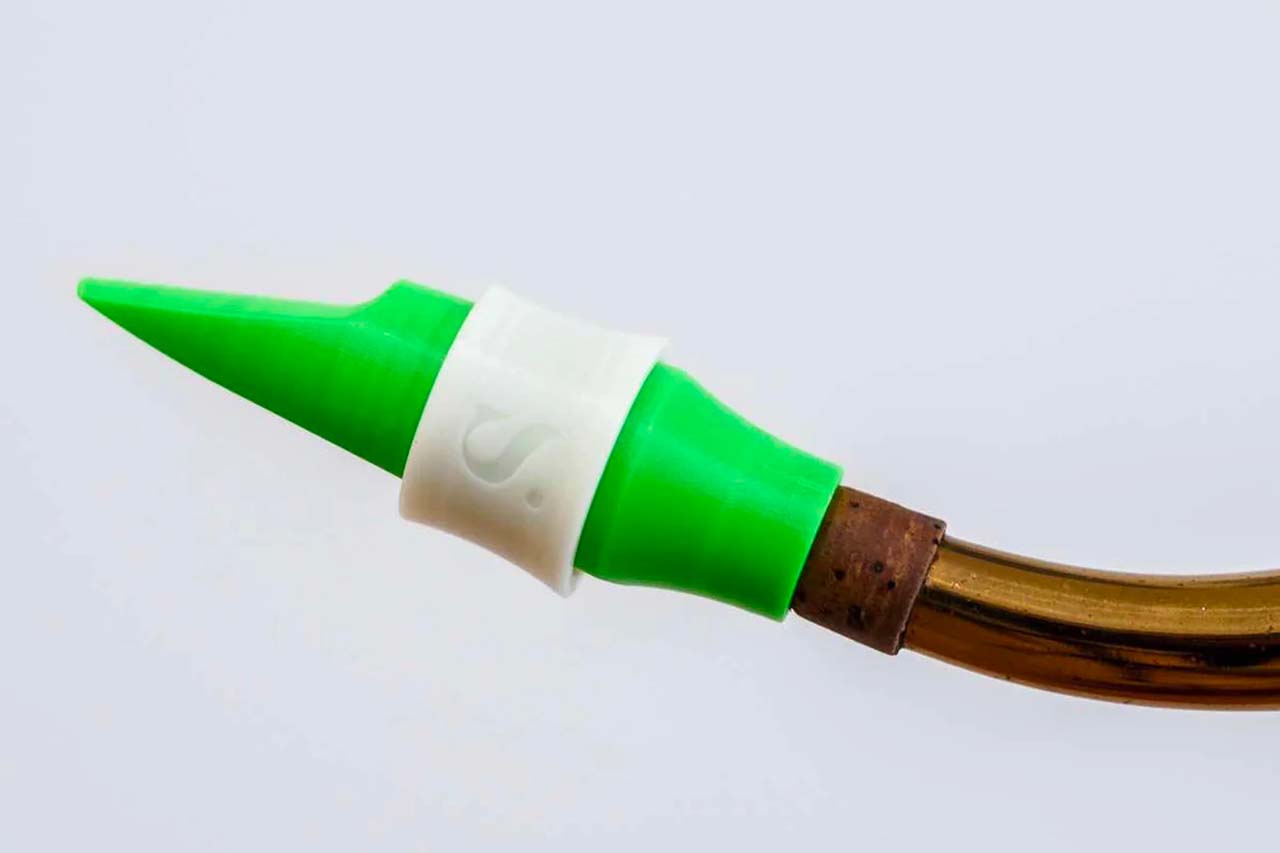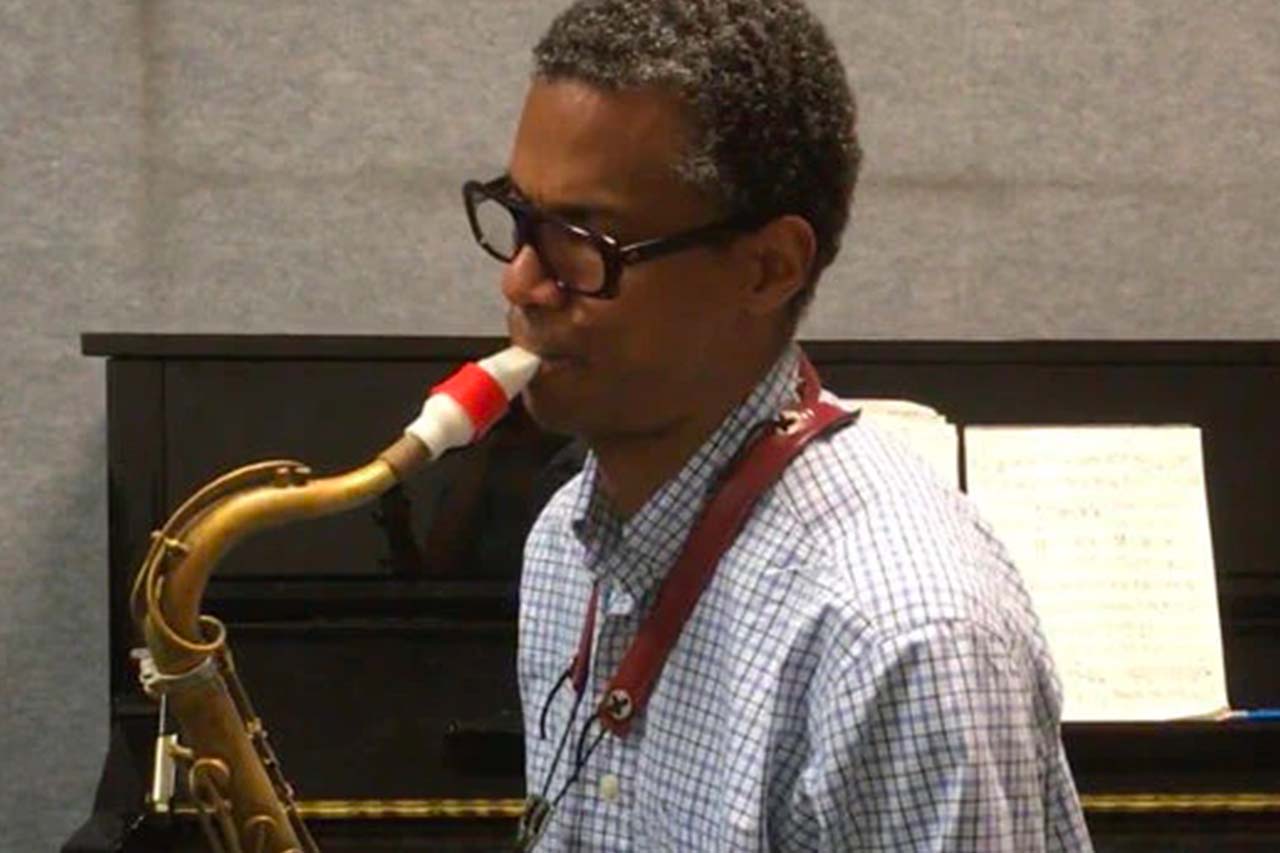From an acoustic point of view, the saxophone mouthpiece is the most important part of the instrument. The mouthpiece connects the saxophonist to their instrument, and it is inside this small object that the sound is shaped.
Saxophone mouthpiece anatomy
The saxophone is a wind instrument, so from an acoustic point of view, the material of the different components (including the mouthpiece) has no effect on the sound. In fact, it's the internal geometry of the bore which is most important. Very small changes, especially on the mouthpiece, can radically change the tone and the feel of play.
Here is a diagram showing the different geometric elements of a saxophone mouthpiece:

The chamber and the baffle are the most important parameters. Their influence on the sound is pitvotal because they determine the shape of the cavity located below the reed, where the sound is created. The tip opening is also an important element, as it directly affects the reed vibration amplitude: each musician will be at ease with a particular opening (a more or less open mouthpiece will be less suitable). It's a bit like the size of your shoes!
For more details, read our articles on each of the parameters:
The importance of the baffle
The saxophone mouthpiece: Large or small chamber?
The saxophone mouthpiece tip opening

Manufacturing material
Saxophone mouthpieces can be made out of many different materials: since the acoustic properties are not affected by the material, the choice is quite extensive. However not all materials are as easy to work with, and certain materials and manufacturing processes can impose geometric choices. There are, however, some important criteria to consider:
Solidity: having a shock-resistant mouthpiece is a real asset. Geometry is very important, even small dents on the rails, for example, can deteriorate the geometry and therefore the quality of the sound.
Non toxicity: when it is not stored in your case, the mouthpiece spends most of its time in your mouth. It is essential to use materials that are safe to place in mouth for prolonged periods.
Comfort: having the material in your mouth for prolonged periods of time makes comfort a very important feature. The feel of it in your mouth and the material temperature are important parameters.
Here are the most common materials:
METAL

Solidity ✭✭✭✭✭ Non-toxicity ✭✭✭✭☆ Comfort ✭✭✭☆☆
Metal is very popular for jazz mouthpieces, especially tenor sax. It is often associated with bright and metallic sounds, because metal mouthpieces often have long high baffles and small chambers. The main issue with this material is the comfort in the mouth. If you're playing outside when it's cold, avoid a metal mouthpiece.
HARD RUBBER
Solidity ✭✭✭☆☆ Non-toxicity ✭✭☆☆☆ Comfort ✭✭✭✭☆
Hard Rubber is a material from the plastic family, invented by Charles Goodyear. It is rubber vulcanized with sulfur. It was primarly chosen by the manufacturers for its very low cost. However, beware as with time the sulfur rises (the mouthpiece turns yellow-green) and can release sulfuric acid.
SCAL3D

Solidity ✭✭✭✭☆ Non-toxicity ✭✭✭✭✭ Comfort ✭✭✭✭✭
Syos mouthpieces were made in SCAL3D until mid September 2025, a new material designed exclusively by Syos with the best french expert in materials. It has been certified as non-toxic, and its resistance to impact is greater than that of hard rubber (you can drop it on the ground, there are less chances it breaks). SCAL3D has been specially designed for 3D printing, so we can manufacture unique mouthpieces with customised internal geometries on demand (read also: 3D printing: future of musical instruments? ).
UPSCAL3D
Solidity ✭✭✭✭✭ Non-toxicity ✭✭✭✭✭ Comfort ✭✭✭✭✭
Since September 2025, Syos mouthpieces are made in UPSCAL3D, our new proprietary material developed after more than two years of research. UPSCAL3D was created to further improve the qualities of SCAL3D while keeping all its benefits. It reaches the hardness of hard rubber, the historical benchmark in the mouthpiece world, but without its drawbacks. Compared to SCAL3D, it is more resistant to shocks, scratches and UV exposure, which helps prevent discoloration and premature aging.
Like SCAL3D, UPSCAL3D is fully FDA certified, guaranteeing total safety in the mouth with no harmful substances. It was also specially designed for 3D printing, which allows Syos to continue offering unique mouthpieces with highly precise and customizable internal geometries.
With UPSCAL3D, Syos combines durability, safety and comfort with cutting-edge acoustic design, pushing innovation in saxophone and clarinet mouthpieces even further.













